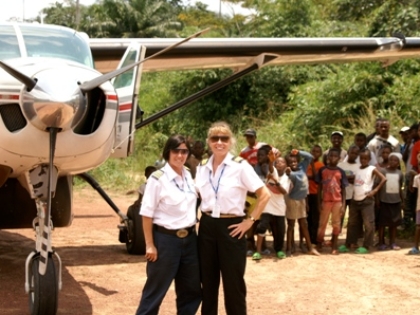There’s a reason that the Greeks came up with the concept of “muses” to explain bursts of inspiration or creativity. It’s because even those of us who make a living at creative endeavors aren’t always sure where those great bits of creation come from. And because of that, if truth be told, most of us are a little bit terrified that one of these days, the magic will suddenly stop working.
So the good news is, scientists are now studying the brain processes that are at least related to creativity, if not directly responsible for it.
The bad news is … those scientists are discovering that even the mappable brain functions associated with creativity look a little bit like alchemy. “It seems,” one researcher concluded, “that to be creative is to be something we don’t have a test for.”
Nevertheless, several neurological research efforts (chronicled in a recent New York Times article) are trying to plumb the mysteries of creativity. Interestingly enough, the “standard” definition of creativity (tested by giving subjects one minute to list all the different uses they could find for a brick) is apparently “the ability to combine novelty and usefulness in a particular social context.”
Personally, I’ve never considered creativity to have any necessary relationship with usefulness. Lord knows, there are plenty of very creative works of art out there that don’t serve any discernible useful purpose. I’d be more inclined to refer to something that combines novelty and usefulness as innovative, rather than creative. Innovation entails an element of creativity, to be sure. But it’s the usefulness requirement that distinguishes between creative art and creative innovation. At least, in my book.
But some of the other findings are fascinating. The parts of the brain related to intelligence, some researchers believe, have superhighway pathways that allow highly intelligent people to get from point “A” to point “B” in their thinking very quickly. The parts of the brain related to creativity, on the other hand, seem to have a greater number of slower, meandering byways and pathways. So slow is apparently good, in terms of creative thinking. Why? In part, researchers believe, because it allows more opportunities for non-standard connections or associations between thoughts or ideas.
That finding correlates with the fact that people regularly find themselves having “Aha” moments about ideas or solutions to problems in unusual places where unrelated ideas touch unexpectedly. (Think Archimedes and his “Eureka!” moment in the bathtub.)
In another study, researchers discovered that creative insight can be reached equally well through very different approaches. In a test where subjects were asked to look at three words and find a fourth word that would link the three, some subjects’ brains showed heightened visual cortex activity right before looking at the words, while others—who did equally well on the test—showed dramatic reductions in visual cortex activity. Some people, in other words, focused their eyes intently on the screen, the better to see relationships in the words. Others closed their eyes, the better to quiet their mind to allow a creative answer to make itself heard.
Again, none of this would surprise anyone in a creative field—or, for that matter, anyone who’s ever been stuck on a project or with a problem and struggled to find a workable solution. Often, my best ideas come when my mind is relaxed. It’s why I cherish my garden and patio as much as I do … and why, even though I swear I can’t keep a single idea in my head while I run, I often come home with a new angle on a thorny problem I’ve struggled all day to crack.
But it’s still interesting to watch experts attempt to map the process in neurological terms. Even if their results only end up confirming what we already know: that creativity is a slow, meandering, maddeningly inefficient and sometimes unpredictable mental process that links unexpected items together in new ways, or allows some people to detect a beautiful pattern in a jumble of notes when all others hear is noise.
Next post: Morgan Freeman and the Fallback Position
Previous post: But I Don’t Have TIME for an Adventure!






Creativity or innovation is elusive to define. If it were otherwise the text would already be written.
Specific to airplanes and flying the process seems mixed with fits and starts over the last hundred years or so. Some efforts became standard or accepted practice while others remained oddities. To the present it seems quite clear that all the effort has been more than what can one do with a brick.
At the heart of it all is still the wonderment of what thoughts coursed through the minds of these creative folks as they walked (ok, flew) the new frontier. Modern measuring and analysis methods applied to those efforts could bring new appreciation of what ws accomplished.